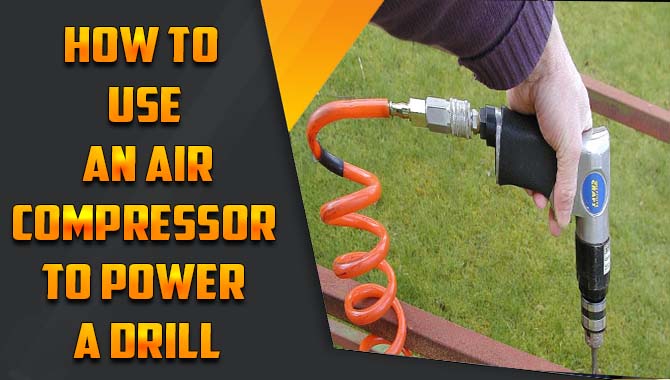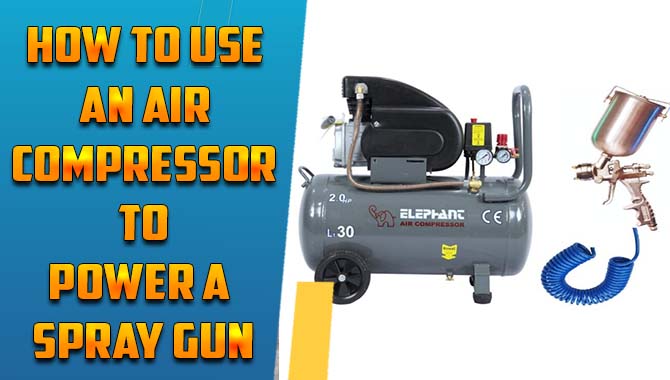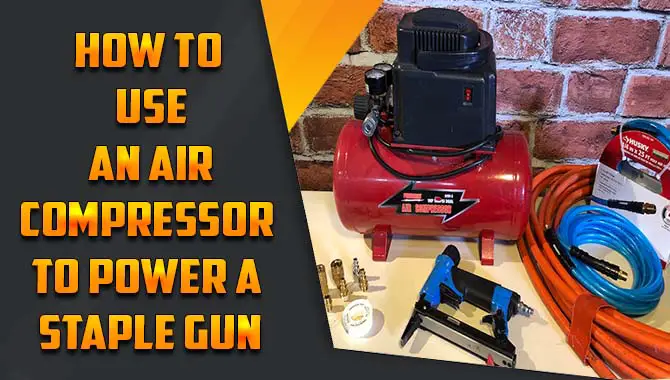When using an air compressor, having the right regulator is essential. The regulator controls the pressure of the compressed air released from the compressor. Ensuring that it is safe and consistent for your tools and equipment.
The regulator controls the pressure of the air that flows through your compressor. Which is essential for ensuring that your tools and equipment work correctly.
Here we will cover everything you need to know about choosing the right air compressor regulator, from understanding what it is and how it works to easy ways how to the right air compressor regulator. We’ll also discuss the importance of having the right pressure gauge reading and answer some common questions regarding air compressor regulators.
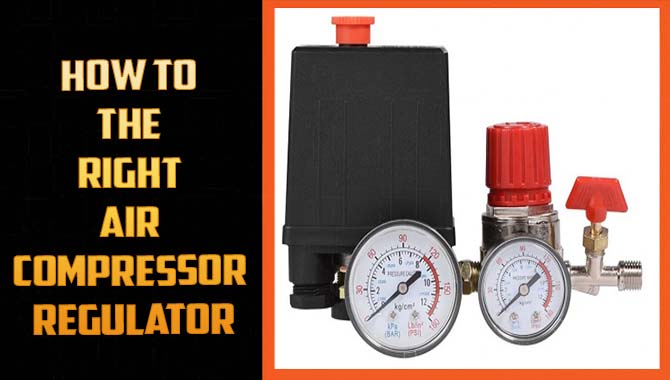
What Is An Air Compressor Regulator?
An air compressor regulator is a device that controls the pressure. Of the compressed air that is released from your compressor. It ensures that the pressure is safe and consistent for your tools and equipment to operate correctly.
The regulator works by reducing or increasing the air pressure flowing through your compressor. Allowing you to adjust the output to match your specific needs. Without a regulator, your tools and equipment may not function correctly, and there could be a risk of injury due to excessive pressure or flow.
Easy Way On How To The Right Air Compressor Regulator
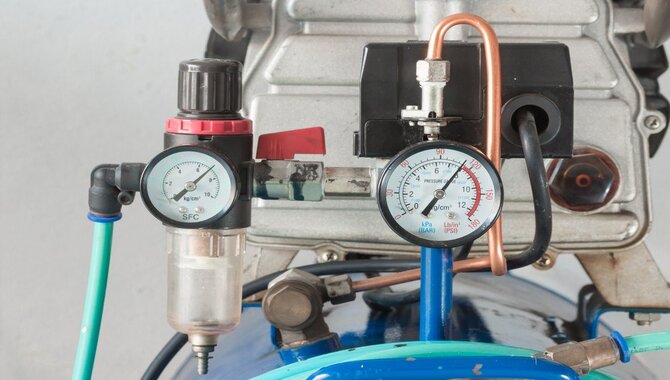
Choosing the right air compressor regulator can be a bit overwhelming, especially if you are new to the world of air compressors. However, some easy ways exist on how to the right air compressor regulator for your needs.
First, determine the maximum pressure your air compressor can produce. This information is typically found in the owner’s manual or the compressor itself. Once you have this information, you can then look for a regulator that is capable of handling that pressure.
The next thing to consider is the size of the regulator. Regulators come in various sizes, so it is important to choose one that is appropriate for the size of your air compressor. A compact regulator may be all you need if you have a small air compressor. However, if you have a larger compressor, you may need a larger regulator to handle the higher pressure levels.
Another important factor to consider is the type of regulator. There are two main types of regulators: a single-stage regulator and a two-stage regulator. A single-stage regulator is the most common and is suitable for most applications. However, a two-stage regulator may be more appropriate if you need precise control over the pressure. This type of regulator provides more accurate pressure control and is ideal for applications.
Importance Of The Right Air Compressor Regulator
The importance of the right air compressor regulator cannot overstate when it comes to ensuring optimal performance and safety in your air-powered tools and equipment. A regulator is a crucial component in managing the air pressure that delivered to your tools.
And it plays an essential role in controlling your pneumatic devices’ speed, torque, and power. By limiting the amount of air pressure that enters the tool, the regulator ensures that the tool is not overloaded and that it operates efficiently without causing unnecessary wear and tear.
One of the key benefits of using the right air compressor regulator is that it allows you to achieve precision in your work. With the regulator, you can fine-tune the air pressure to the exact level required for the task, whether sanding, painting, or nailing.
This level of control ensures that the tool operates optimally, which translates into better results and less waste of materials. Additionally, it allows you to avoid over-pressurization, which can lead to damage to the tool or even personal injury.
Understanding The Components Of A Pressure Regulator
Air compressor regulators have five primary components that include the body housing internal parts made from brass or stainless steel. You can use an adjusting knob to set your desired outlet pressure. To regulate air pressure accurately, a diaphragm works with a spring to control the valve’s opening and closing.
By understanding these essential parts of an air compressor regulator, you can control your compressed air system’s recommended psi and reduce costly damage caused by too much pressure.
How Does A Pressure Regulator Work?
A pressure regulator controls the flow of compressed air from your compressor tank to your pneumatic tools. The regulator’s diaphragm and spring work together to maintain a consistent pressure level, preventing your tools from being damaged by excess or insufficient air pressure.
By adjusting the regulator knob, you can set the desired outlet pressure for your specific tools and ensure that your system is running efficiently. Remember, selecting the right regulator for your system is crucial, so consider factors such as flow rate and compatibility with your tools before purchasing.
Setting Up Your Air Compressor
Understanding how the pressure regulator works is crucial to ensure the proper set-up of your air compressor and avoid costly damage to your tools and equipment. The regulator controls compressed air flow by maintaining a consistent pressure level ranging from a few pounds per square inch (psi) to several hundred psi.
You can set the desired outlet pressure by adjusting the regulator knob clockwise or counterclockwise. Remember to check your tool’s recommended psi before connecting it to an air hose to avoid leaks and moisture in your compressed air system.
Checking The Tool’s PSI Compatibility
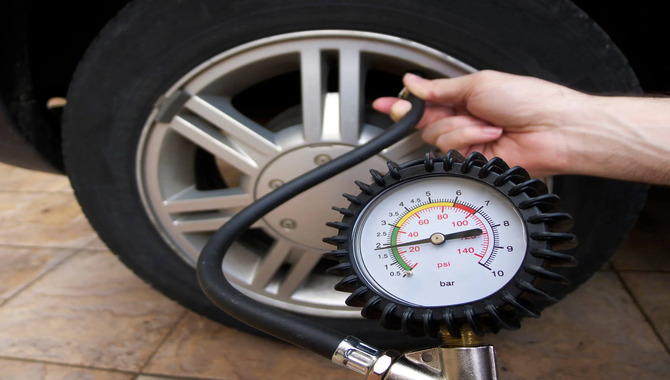
Always check the recommended PSI when connecting them to your compressed air system to ensure compatibility with different tools. The pressure regulator helps control air flow and maintain the right pressure using features like a regulator knob and gauge readings.
Remember to check the outlet pressure for leaks and lower or higher pressure than required. Protect your equipment from costly damage by keeping moisture out with an air filter and locking feature on your compressor tank.
Connecting The Tool And Air Hose
To connect your tool and air hose, use a pressure regulator to reduce compressed air from a higher level to a lower, more manageable level. This can prevent costly damage and ensure your equipment performs consistently. Pressure regulators come in different types, including direct-operated or pilot-operated, each with its benefits and drawbacks.
Utilize an internal diaphragm that reacts to changes in pressure so that you can control how much air flows into the tool via the air hose. Remember that too much or too little air pressure could cause damage to your tools or compressor tank.
Adjusting The Pressure Regulator Knob
Adjusting the regulator knob is easy with a clockwise or counterclockwise motion; this controls the air flow and alters the outlet pressure. Before using any pneumatic tool, select the right pressure recommended by its manufacturer; set your regulator accordingly and prevent costly damage or moisture leaks. Turn your regulator knob clockwise to increase your psi output and counterclockwise to lower it.
Unlocking And Adjusting The Pressure Regulator
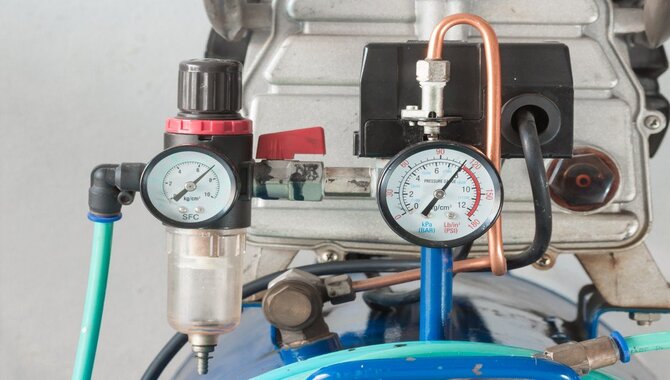
When unlocking and adjusting an air compressor regulator, locate the regulator knob and turn it counterclockwise or clockwise based on your requirement for lower or higher air pressure.
Use a pressure gauge to check the outlet pressure of your compressor before adjusting the set screw on the regulator knob till you achieve your desired pressure level. Finally, lock your air compressor regulator in place using its locking feature to prevent costly damage due to leaks or moisture.
Understanding The Pressure Gauge Reading
Understanding how to read the pressure gauge is crucial in finding the right air compressor regulator. Familiarizing yourself with its usage can help you determine the recommended PSI for your tools. To achieve this, it is essential to use a regulator that can adjust. The air pressure output of your compressor depends on your needs. Ensuring proper maintenance of all components will guarantee accurate readings and prevent costly damage.
Consider To Choose The Right Compressor Regulator
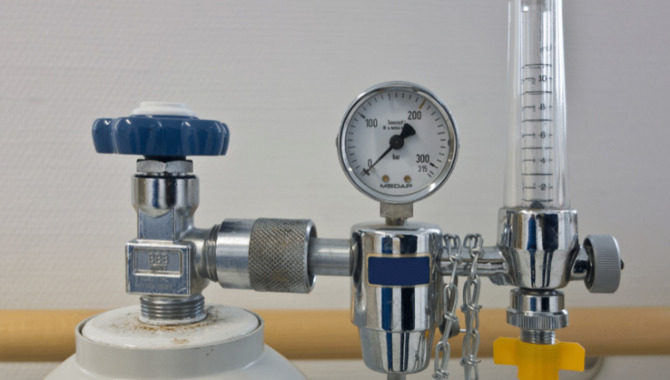
Choosing the right air compressor regulator depends on several factors. First, determine the required PSI for your tools or equipment. Then, it’s important to select a regulator that can handle the maximum airflow of your compressor.
Consider the type of application and environment in which you’ll be using the regulator. As well as its compatibility with your existing air system components. Choosing a regulator with reliable performance and durability for long-term use is also important. Lastly, don’t forget to factor in your budget when making your final decision.
Conclusion
Choosing the right air compressor regulator is an important decision that can impact the performance and longevity of your equipment. By considering factors such as the type of compressor you have, the level of pressure control you require, and the size and compatibility of the regulator, you can make an informed decision that meets your specific needs.
Having the right air compressor regulator is crucial for ensuring efficiency and accuracy in your work. It helps you maintain the correct air pressure required for your tools and equipment to function effectively while protecting them from damage due to over- or under-inflation. By following our easy steps on how to the right air compressor regulator, you can ensure that you get the best results every time you use your air compressor.
Frequently Asked Questions:
What Are The Benefits Of Using A Compressor Regulator?
A compressor regulator is crucial for controlling air pressure. Ensuring safe and consistent performance and reducing wear and tear on equipment. It also improves efficiency and lowers energy costs. Various sizes and styles are available to suit diverse requirements.
What Is A Compressor Regulator, And Why Is It Good For You?
A compressor regulator is a tool that controls the air pressure output from an air compressor. It’s beneficial because it enables users to manage air pressure and flow, enhancing efficiency and safety and preventing damage to equipment. Choosing the right compressor regulator can save time, and money and extend the tool’s lifespan.
How Do I Choose A Good Air Compressor Regulator?
Choosing a good air compressor regulator involves finding one that matches the PSI and CFM of your tools, is made from durable materials, and features a gauge for accurate pressure adjustment. Easy installation and maintenance options should also be considered for convenience.
Are There Any Drawbacks To Using An Air Compressor Regulator?
While an air compressor regulator can reduce airflow and pressure, it also prevents tool damage. Improper maintenance may cause leaks or malfunctions, and a poorly calibrated regulator can result in inaccurate readings. Though drawbacks exist, benefits outweigh them if the regulator is maintained correctly.
How Do I Determine The Correct Size And Type Of Regulator For My Air Compressor?
To choose the right regulator for your air compressor, determine the maximum PSI and CFM needed for your tools. Pick a regulator with a higher maximum PSI to prevent pressure drops. Check inlet/outlet sizes and select a durable, long-lasting regulator that matches your needs.

I am passionate about home engineering. I specialize in designing, installing, and maintaining heating, ventilation, and air conditioning systems. My goal is to help people stay comfortable in their homes all year long.
